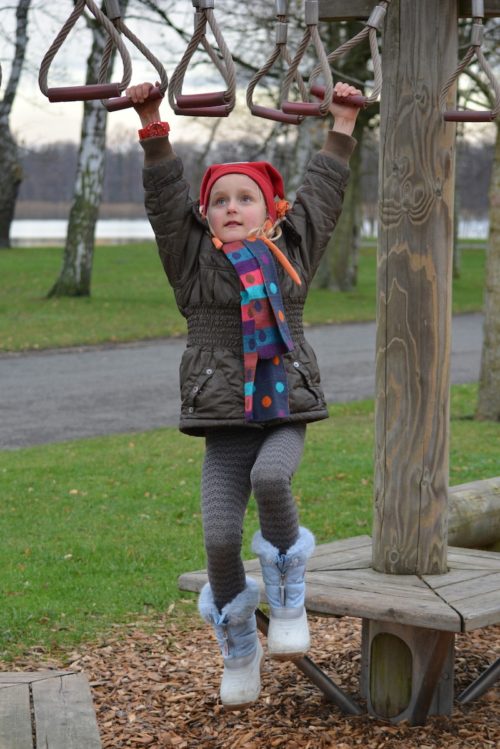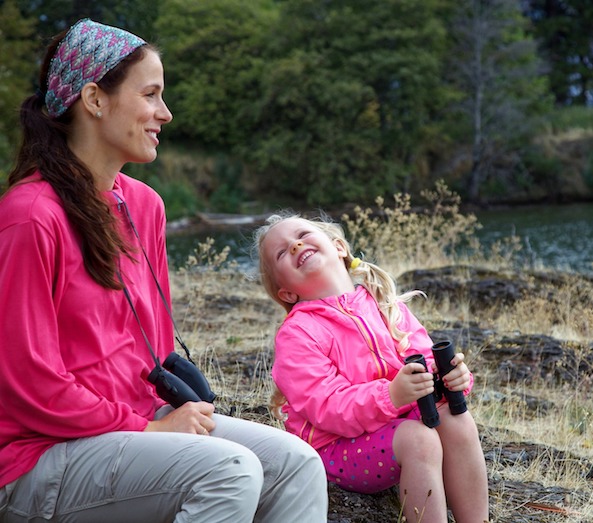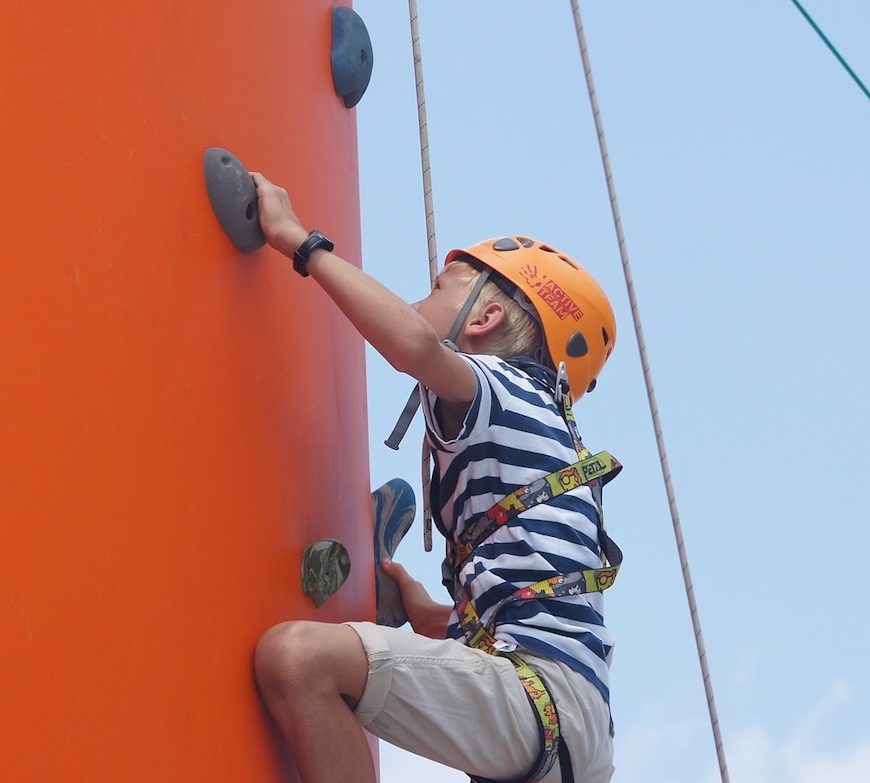Boost Resilience in Children with these Top Tips
The concept of “resilience” has become quite a trendy topic in the world of parenting and education. What is resilience and how can it benefit our children? Resilience is more than just being “able to cope” or being “tough”, it is more to do with fostering the social and emotional strength that is necessary to be self-aware and emotionally literate — skills that are hard to define and target, especially in younger children. Identifying emotions and then learning how to deal with them is a massive learning curve for younger kids.
As children mature, they are faced with both academic and social challenges and their level of resilience will determine how they cope with these situations. As parents, our natural response is to shield our children from stress, but instead we need to give them the tools to positively deal with stressful situations. Being resilient does not mean that your kids won’t experience difficulty or distress. It means they will know how to is how cope with the situation. Keep in mind these key points we should and shouldn’t do to boost resilience in our children.
Boost resilience in children by STOPPING these 5 things:
 Stop doing everything for your child.
Stop doing everything for your child.
We do a lot for our kids, and sometimes we end up doing everything for our kids. The best way to raise independent children and to boost resilience in children is to allow them time to practise being independent. This can be difficult with younger children who genuinely need help with certain tasks but as parents we can always let them try first on their own before stepping in and taking over. They may surprise you and themselves with how much they can accomplish independently!
Stop focusing on the end result.
Praising the effort, not the end result is key in building resilience. This one is so important, especially in our ultra-competitive, test dominated school system that places a great emphasis on exam results. As schools are teaching grit and resilience, The most important part of the grade is determined by the effort that went into the activity and that’s the thing that we should be applauding. The approval should come from the effort, not just the result.
Stop and think about how YOU deal with adversity.
Imitation is such a powerful way to learn. Our children want to be just like us, and they’ll be watching everything we do. How do we deal with difficult situations? It’s important to let them see how we deal with disappointment. The natural reaction is to shield children from our own difficulties but bringing them into your emotional world at appropriate times will help them to see that sadness, and disappointment are all very normal human experiences. When these experiences are normalised for them, they will become more open with exploring and experimenting with ways of responding to tricky situations in their own lives.
Stop overprotecting your child and shielding them from their own mistakes.
Facing fear is so empowering (within the limits of course!) but kids need the right support to do so. as we all do. Rather than forcing them into risk taking, try to gradually move them towards it using small steps while working towards an ultimate goal. Boost resilience in children by letting them know that the courage they show in doing something brave and difficult is more important than the outcome. When they take risks they start realise their own abilities and capacity to learn and adapt.
Stop trying to fix the problem and ask questions instead.
When our kids come to us with problems or difficult situations, the natural response is to lecture or explain what the best solution might be. A better strategy is to ask questions of your child instead. Explore their feelings about the situation. Listen to their ideas of how they can deal with the problem. By bouncing the problem back to the child with questions, the parent helps the child think through the issue and come up with solutions. Helping your child to identify their emotions starts at an early age. These emoticon matching cards can help younger children identify key emotions through fun and interactive games.
Boost resilience in children by DOING these 5 things:
 Do foster a positive, supportive relationship.
Do foster a positive, supportive relationship.
The most important factor in a child’s level of resilience is having at least one stable and supportive relationship with an adult. This is external support leads kids through adversity because these relationships allow children to develop coping skills. The presence of a responsive adult and social support is associated with more positive emotions, a sense of control over situations and higher self-esteem, and motivation to keep trying – all important qualities in building resilience. By reminding them about family members and friends who are proud of them continues to build their self-esteem and their connection with the people who love them.
Do allow appropriate levels of independence.
Kids can’t experiment with resilience if they don’t have the chance to do things that are difficult, things that they might not succeed with at first. Seek out opportunities to allow your child to experiment with appropriate levels of independence. The playground is a great place to allow more independence – by struggling to get through the monkey bars or to climb up ropes to a high slide, children are challenged to push themselves past their comfort zone. It’s important to give kids enough support so they have the confidence to face challenges, but not so much help that they can’t learn from their own mistakes. Remove your support gradually and allow them the chance to see their own capabilities. If they fall, encourage them to get up and try again.
DO encourage a growth mindset.
A growth mindset means believing that our most basic abilities can be developed through dedication and hard work. Fostering this mindset in our children is the biggest gift we can give them. Encourage them to try new things. When your child says “I can’t do this”, then you need to rephrase to: “Yet. I can’t do this yet.” The concept of “YET” means that your child realises that they are in control of the situation and its outcome. It rewards the effort and not the result. We may not all be the best at a certain skill but with hard work and dedication, we can improve on our own performance. Most importantly, the bar for achievement is set against themselves, not others. Try and create an environment where struggle and risk-taking and doing things outside their comfort zone is valued more than getting the right answer or being the best at something. Talk about mistakes and failures as normal parts of learning.
Do provide them problem solving tools.
The words we choose to use are an important part of problem solving. Giving our children problem solving tools means teaching them ways of talking to themselves about the tricky situation. Start by giving them the language to solve their own problems. Encourage children to ask themselves:
“What would [someone they admire] do in this situation?”
”What did I do last time I was in a situation like this?”
“What is the first step I can take in solving this problem?”
Look for opportunities to problem solve collaboratively so that you can model this style of “self-talk”. The more your child sees you doing this, the easier it will be for them to apply it to their own difficult situations.
Do nurture and encourage optimism.
Optimism has been found to be one of the key characteristics of resilient people. Children are not necessarily born being optimists or pessimists, although many will have a tendency to sway one way or the other. For the most part, children acquire their way of thinking from the adults they observe and model. The brain can be rewired to be more optimistic so if your child tends to look at the glass as being half empty, show them a different view. Most importantly, you don’t want to invalidate their feelings, but rather show them a different perspective on the situation. Acknowledge their view but then introduce them to a different one. The idea is to focus on what is left, rather than what has been lost. So, if fun plans have to be cancelled, instead of focusing on what won’t happen, try to reframe the situation and focus on other fun things that can happen instead.
 Boosting resilience in children is a long term project.
Boosting resilience in children is a long term project.
Boosting resilience in children is not an easy fix or a short-term project. It takes time, effort and consistency in our own behaviours in order to foster the skills and abilities necessary for children to be resilient. This is ongoing, evolving process which matures and changes as our children grow. As parents, the most we can do is to give our children the skills to manage the challenges they will face in life.





